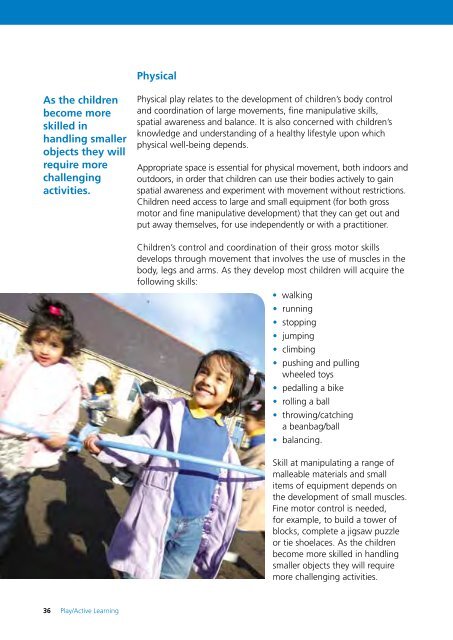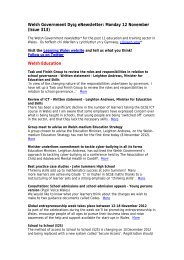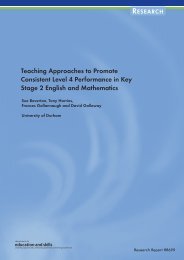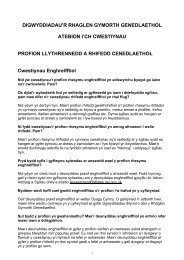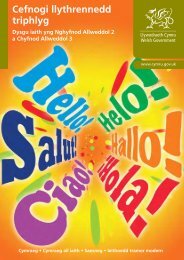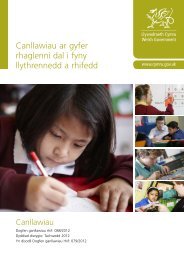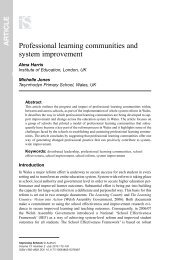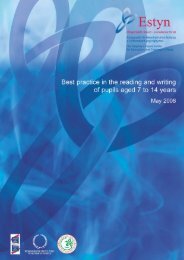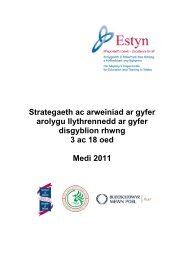Play/Active Learning
Play/Active Learning
Play/Active Learning
Create successful ePaper yourself
Turn your PDF publications into a flip-book with our unique Google optimized e-Paper software.
PhysicalAs the childrenbecome moreskilled inhandling smallerobjects they willrequire morechallengingactivities.Physical play relates to the development of children’s body controland coordination of large movements, fine manipulative skills,spatial awareness and balance. It is also concerned with children’sknowledge and understanding of a healthy lifestyle upon whichphysical well-being depends.Appropriate space is essential for physical movement, both indoors andoutdoors, in order that children can use their bodies actively to gainspatial awareness and experiment with movement without restrictions.Children need access to large and small equipment (for both grossmotor and fine manipulative development) that they can get out andput away themselves, for use independently or with a practitioner.Children’s control and coordination of their gross motor skillsdevelops through movement that involves the use of muscles in thebody, legs and arms. As they develop most children will acquire thefollowing skills:s walkings runnings stoppings jumpings climbings pushing and pullingwheeled toyss pedalling a bikes rolling a balls throwing/catchinga beanbag/balls balancing.Skill at manipulating a range ofmalleable materials and smallitems of equipment depends onthe development of small muscles.Fine motor control is needed,for example, to build a tower ofblocks, complete a jigsaw puzzleor tie shoelaces. As the childrenbecome more skilled in handlingsmaller objects they will requiremore challenging activities.36 <strong>Play</strong>/<strong>Active</strong> <strong>Learning</strong>


